|
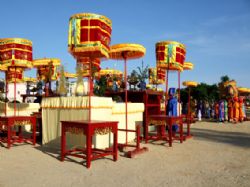
The altar and worshipping equipage in the
Xa Tac Worshipping
Ceremony.
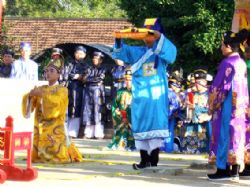
The King carries out the worshipping
ceremony.
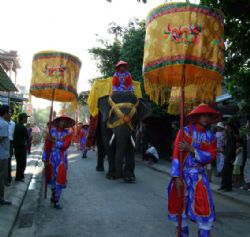
The royal palanquin is led by
fighting-elephants.
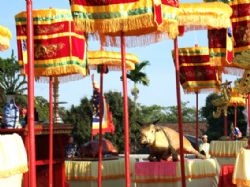
The three-animal
offering includes a buffalo,
a deer and a
pig.
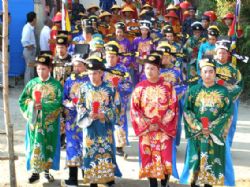
The mandarins, dressed correctly, prepare
for the
ceremony.
|
For years, the Vietnamese people have practiced many worshipping
rites. When speaking about the royal worshipping ceremony, apart from Nam
Giao Worshipping Ceremony, it is impossible not to mention the Xa Tac
Devotion Ritual that was ranked in the list of “Dai tu”, before “Trung tu”
and “Quan Tu” by the Nguyen kings, meaning that it was one of the most
important among national worshipping ceremonies.
As explained by
our ancestors, the Xa Tac Altar was built to worship the two genies of wet
rice cultivation; rice and soil (Xa means soil and Tac
means rice). The words “Xa Tac” also implicated the country and people.
Therefore, anyone from the King to the common people attached much
importance to the rite.
In the
past, the national economy mainly depended on agriculture so all the kings
paid much attention to the development of agriculture. In their belief,
“If there is no land, people can not cultivate, no rice, people have
nothing to eat. The king must highly appreciate the soil and pray to the
soil genie for happiness, wealth and luck”. As a result, when acceding to
the throne, the Vietnamese kings used to build the Xa Tac Altar to worship
the Soil and Rice Genies and to pray for a powerful country and rich
people and encourage the people to work industriously to
prosper.
The Xa Tac
Ritual was held differently during each reign. However, in the feudal
Nguyen Dynasty, Xa Tac Ritual was held regularly on a larger scale.
According to history books, in the year of the 5th Gia Long (1806), the King ordered
the construction of the Xa Tac Altar in the proximity of the
Hue
Imperial
Palace in Thuan Hoa Ward, present-day
Hue
City
. The ceremony was held twice in
the year, in Autumn and Spring by the court. One day before the ceremony,
the path from the Inner City to the Xa Tac Altar was cleaned and the King,
mandarins and anybody who attended the ceremony had to be abstinent and
chaste.
To prepare for
the ceremony, the Ministry of Rites and Interior was sent to the Xa Tac
Altar to prepare offerings, worshipping objects and the incense-table. On
the main day of the ceremony, the two sides of the path from the Moon Gate
to the Altar were decorated splendidly with flags and torches. On the
incense-table, apart from often-seen worshipping equipage and objects,
there was a three-animal offering, including a buffalo, deer and pig. In
front of the central alter, the King – the ritual officiating priest,
dressed in royal robe and gem belt, followed by correctly-dressed military
mandarins, solemnly carried out the ceremony with many religious rites.
When the official ceremony ended and the King returned to the
Inner
Palace
, local people offered their
gifts and prayed for clement weather, abundant crops and a happy
life.
To heighten
awareness of the significant meaning of the ceremony, the authority of
Hue
City
restored
the ceremony to preserve the national religious heritage and create a
foundation to set up a file to submit to UNESCO for being recognized as an
intangible cultural heritage of mankind.
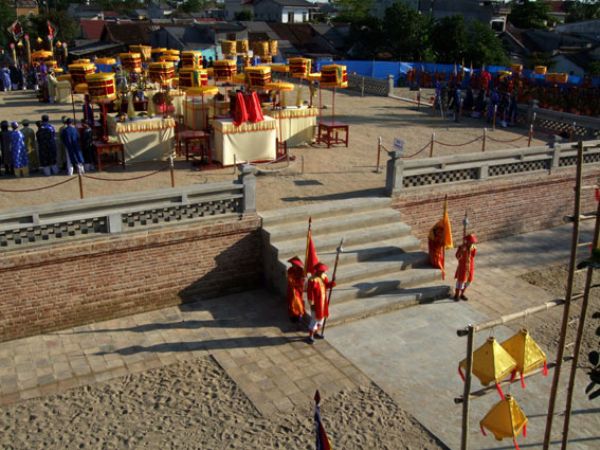
The scene of Xa Tac Altar on the main festive
day.
Story by Dang
Thanh Hoa – Photos by Dinh Cong
Hoan
|






Comments
Post a Comment